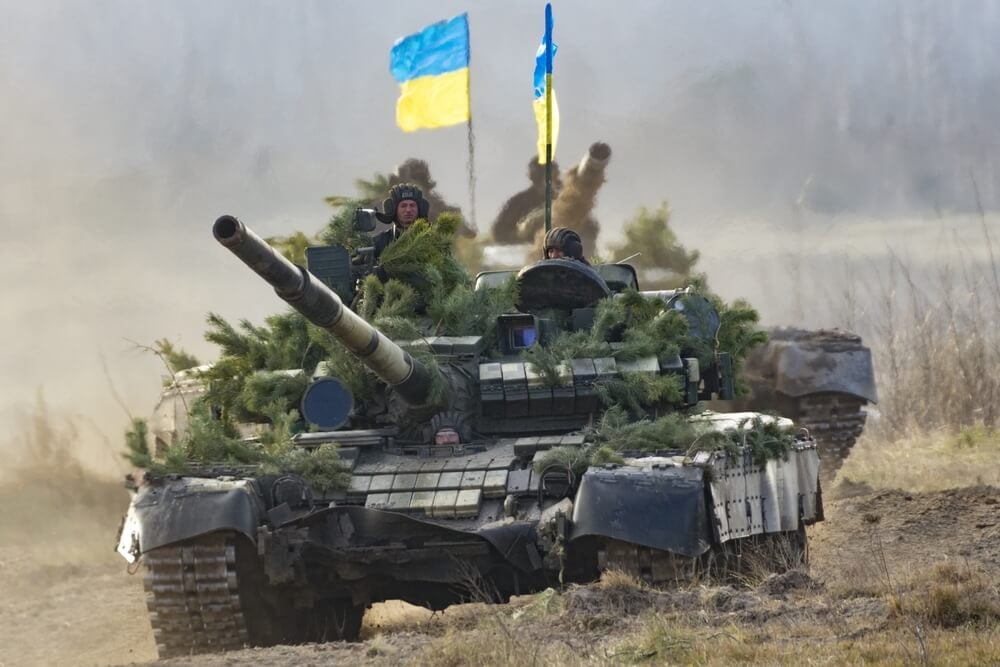Ukrainian President Volodymyr Zelensky went to Washington on his first international trip since the start of Russian aggression, almost two years ago, when he met with US President Joe Biden.
Zelensky's visit to the US today, and especially the meeting with President Biden on Thursday, will probably be the most important for the Ukrainian leader in the series of talks with Western leaders that began at the White House in December 2022.
Zelensky announced that he will present the "victory plan" to Biden first, stressing that he will not talk about its details before that. However, it is already evident that two points will dominate the Ukrainian plan, which Biden will see first.
First, the request for the US's approval for the use of long-range weapons on targets deeper in Russian territory and firm assurances that Ukraine will eventually integrate into the NATO security structure to protect against any future attempts by Russia to threaten it.
As Zelensky said on Friday, one step from his plan is "related to strengthening Ukraine's weapons capabilities," and the second requirement is to ensure "a clear place for Ukraine in the world's security architecture."
High demands
The President of Ukraine is going to the White House with high demands, aware that only ten days ago, in a meeting with UK PM Keir Starmer, President Biden denied Ukraine permission to use long-range missiles of Western production for strikes deep into Russia's territory.
Also, his request for Ukraine's inclusion in NATO's security structure (or full membership?) comes after two annual Alliance summits, where such expectations of Kyiv have been denied.
The Ukrainian president's persistence in refusing to come to terms with the West’s reluctance, particularly the US, has proven to be profitable several times
However, the Ukrainian president's persistence in refusing to come to terms with the West’s reluctance, particularly the US, has proven to be profitable several times, so Zelensky is traveling to Washington with the belief that he will bring results this time as well.
"We have had some decisions in the history of our relationship with Biden—very interesting and difficult dialogues. He later changed his point of view," said the Ukrainian president on the eve of his trip to the United States.
This is his clear reference to Washington's earlier refusals and concessions regarding the delivery of modern Western tanks, then long-range artillery, as well as F-16 aircraft.
Washington's calculations
Whether the new US agreement to Kyiv's high demands will be a continuation of this series will depend on several factors, primarily on the internal calculations of the US administration.
The forthcoming meeting with Zelensky on Thursday will be their last meeting in the full capacity of the US president before the November presidential election.
This timing presents the US president with the dilemma of whether he will use the last chance in his mandate to cross the threshold and provide important support to Ukraine, which Kyiv believes could be decisive in the two-and-a-half-year war.
Or will he avoid such a move, fearing that its significance and reach will be too radical for Kamala Harris' prospects just weeks before the presidential election?
Vladimir Putin recently contributed to intensifying the dilemma in Washington
Vladimir Putin recently contributed to intensifying this dilemma in Washington when, on the eve of the meeting between Biden and Keir Starmer, he said that their approval for Kyiv to use long-range missiles against Russia would mean "that NATO countries are at war with Russia."
The White House will therefore have to weigh its interests in several directions in the coming days and weeks, and at the very least, Biden will not have the opportunity to simply repeat to Zelensky his previous position that he does not allow the use of long-range weapons against Russia.
Support for the final step
Washington can clearly see that the Ukrainian leader is coming for final support, which he believes will result in the war ending in Ukraine's favour. Zelensky's so-called "victory plan" is actually a request for Ukraine's final effort to secure a negotiating position on the battlefield in the coming months that will lead to the outcome that Kyiv wants.
The US Congress, along with some European allies, strongly opposes President Biden's reluctance to provide such support, and they are also seeking greater determination from Washington.
 Zelensky's plan serves as a call to action, given that Ukraine will face its most challenging energy situation since the start of the war
Zelensky's plan serves as a call to action, given that Ukraine will face its most challenging energy situation since the start of the war
Volodymyr Zelensky's intention to discuss the plan with Donald Trump is also part of the pressure on Biden and Kamala Harris not to hesitate and once again give in to Kyiv's demands.
Although Trump does not show nearly as much enthusiasm to support Ukrainian defence as demonstrated by Biden, he will also get Kyiv's "victory plan." This will not only be Ukraine's timely stake in the potential return of Trump to the White House, but also its intention to expedite the current administration's decision to remove the ban on the use of long-range weapons before the November elections.
Zelensky's plan serves as a call to action, given that Ukraine will face its most challenging energy situation since the start of the war, with 70 to 80% of its thermal generation capacity either damaged by Russian strikes or occupied.
A potential shift in President Biden's administration's stance and the adoption of the "victory plan" would mark not only the culmination of his presidential term, but also the culmination of his entire political career, primarily focused on foreign affairs.
On the other hand, a negative response to the Ukrainian president would discourage the rest of the international coalition of supporters of Ukraine, leaving the next US administration with the mortgage of an indecisive leadership, which hesitated to use the chance to end the biggest international crisis in its mandate.